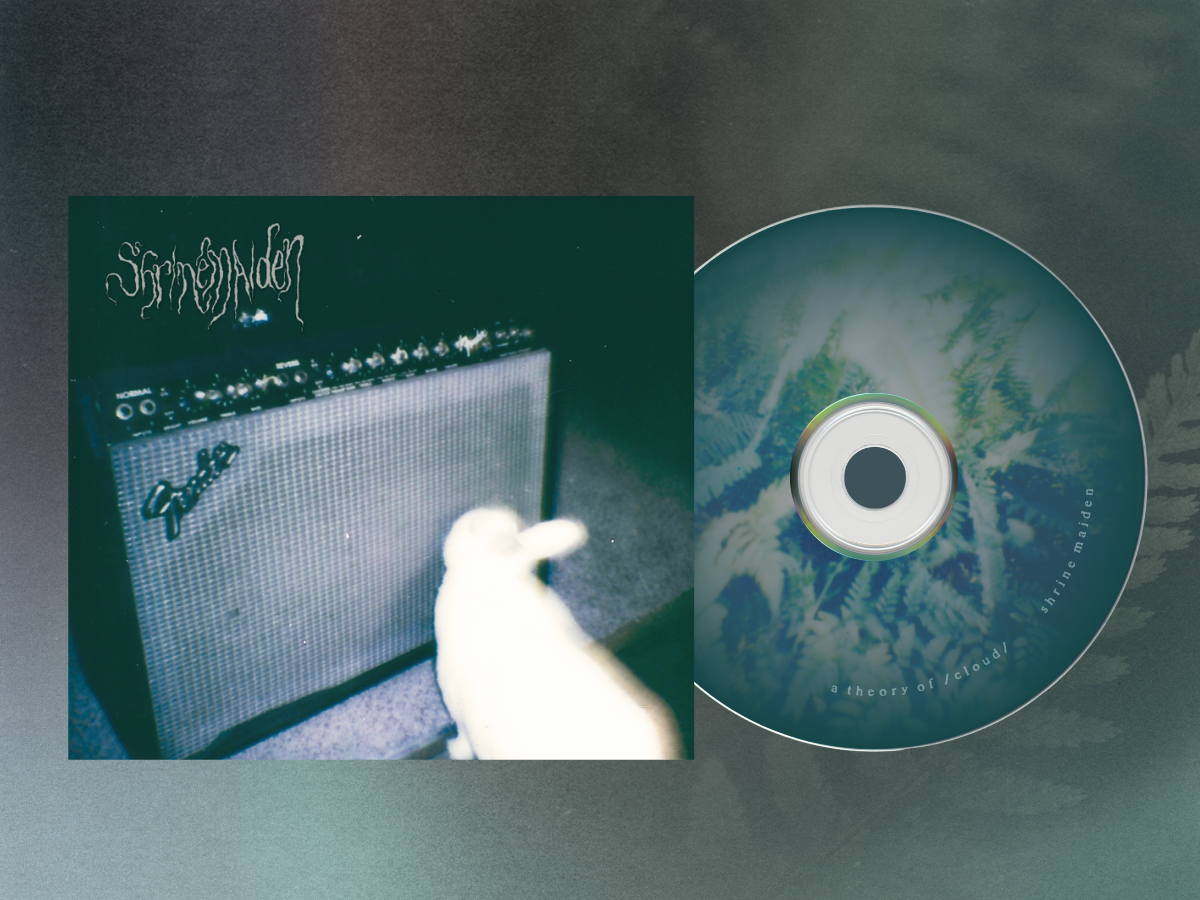Shrine Maiden
Inspired largely by French philosopher and aesthetics theorist Hubert Damisch, heavy experimental duo Shrine Maiden’s A Theory of /Cloud/ represents a very contemporary depth of intellectualism and poetry in metal. Like Apparitions’ propensity for interpreting Georges Bataille and Diane Wakoski as forbidding walls of sound, Shrine Maiden are driven by a desire to enfold complex and varied concepts into music that is by turns crushing and effervescent.
Singers / multi-instrumentalists –– and husband-and-wife duo –– Rachel Nakawatase and Ryan Betschart, as Shrine Maiden, weave grinding slow-motion riffs and howling vocals through dark ambient soundscapes. Echoes of post-goth ethereal bands like Lycia and This Ascension abound in the occasionally dreamy, chorus-soaked, strumming reveries –– but explosions of doom-drone and blackened transcendence recall The Body, Thou, and other contemporary mavens of the rich ecosystem of experimental metal genres. Indeed, with A Theory of /Cloud/, Shrine Maiden have confidently taken their place within that thriving ecosystem.
A Theory of /Cloud/, as a whole, responds to Damisch’s idea that linear perspective, in its limitations, generates “an oppositional factor with which it interacts dialectically,” which Damisch termed “the cloud.” The band says: “We wanted to see how we could explore this idea sonically, where the cloud is our textured soundscapes, buried vocals, lyrics hidden within scream, our play with genre, language.” While this forms the record’s broader framework, individual moments throughout the record reflect on everything from weather and volcanoes to Roberto Bolaño and late-stage capitalism-induced anxiety and incorporate Rachel’s upbringing in the Hawaiian performing arts of hula (dance), mele (song), oli (chant), and pule (prayer). And through all of this conceptual complexity and aesthetic transcendence, there is also a celebration of the love that Nakawatase and Betschart have for each other.
While terms like “dark” and “heavy” are aesthetically well-deserved, it might be best to think of Shrine Maiden’s work as something beyond these limiting terms. Damisch’s cloud theory was, after all, actually about visual experiences and not musical ones. And so Shrine Maiden’s work represents not only the crossing of genre lines and representations of love and anxiety interwoven, but also interpretations of aesthetic theories about one sense in the service of another. A Theory of /Cloud/ is at times aurally brutal, but one is left with the sense that Shrine Maiden have set out in search of a more complex and involute kind of beauty.


